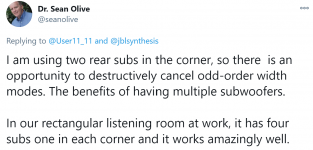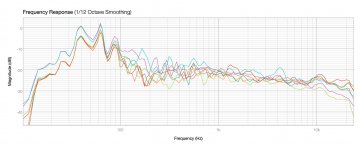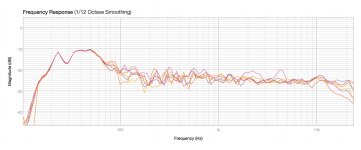The real problem with (very) narrow speakers is in the limit of the dimension of the mid-woofer that can be used. Bass from a 10" is different from what can be achieved with a 5" or 6" driver.
Ralf
The upper frequency of bass is 250Hz which is 4.5 feet long. You're heading into the modal region by then. Which means you want to start moving your drivers out of your main channels anyway.
Why? As an example, Dr. Geddes still runs the mains full-range, just with additional LFE sources for smoothing. To my knowledge, he has never recommended crossing over early.The upper frequency of bass is 250Hz which is 4.5 feet long. You're heading into the modal region by then. Which means you want to start moving your drivers out of your main channels anyway.
...Everything is inherently flawed. As I use to remind my young engineers, all of our analysis is wrong, all of our designs have flaws... our job is to minimize the level of wrongness in the analysis and reduce the design flaws to those which we and our customers can live with...
Worth repeating.
Every designer needs to choose the set of compromises that best suit the goals.
I have designed and built good speakers with wide baffles and with narrow baffles.
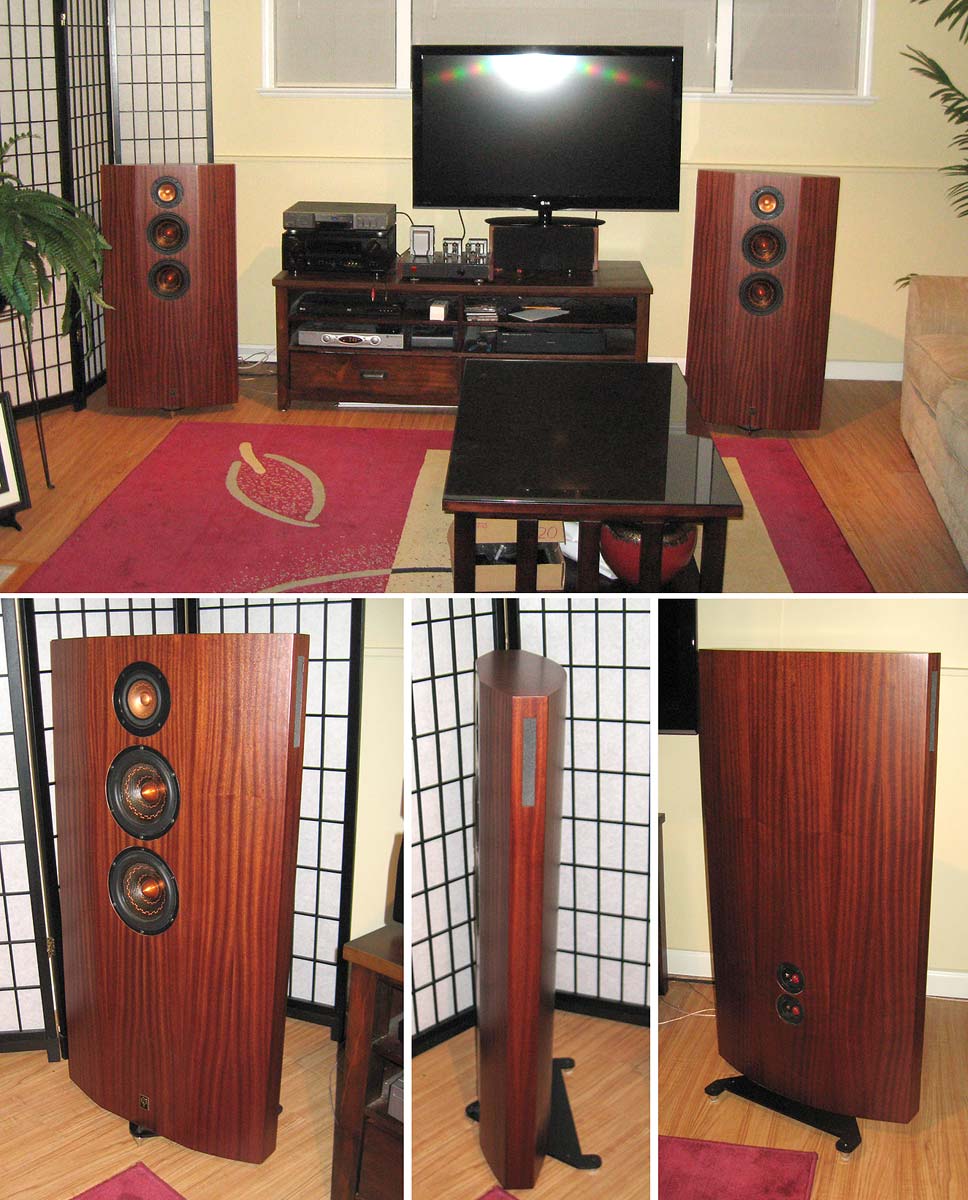
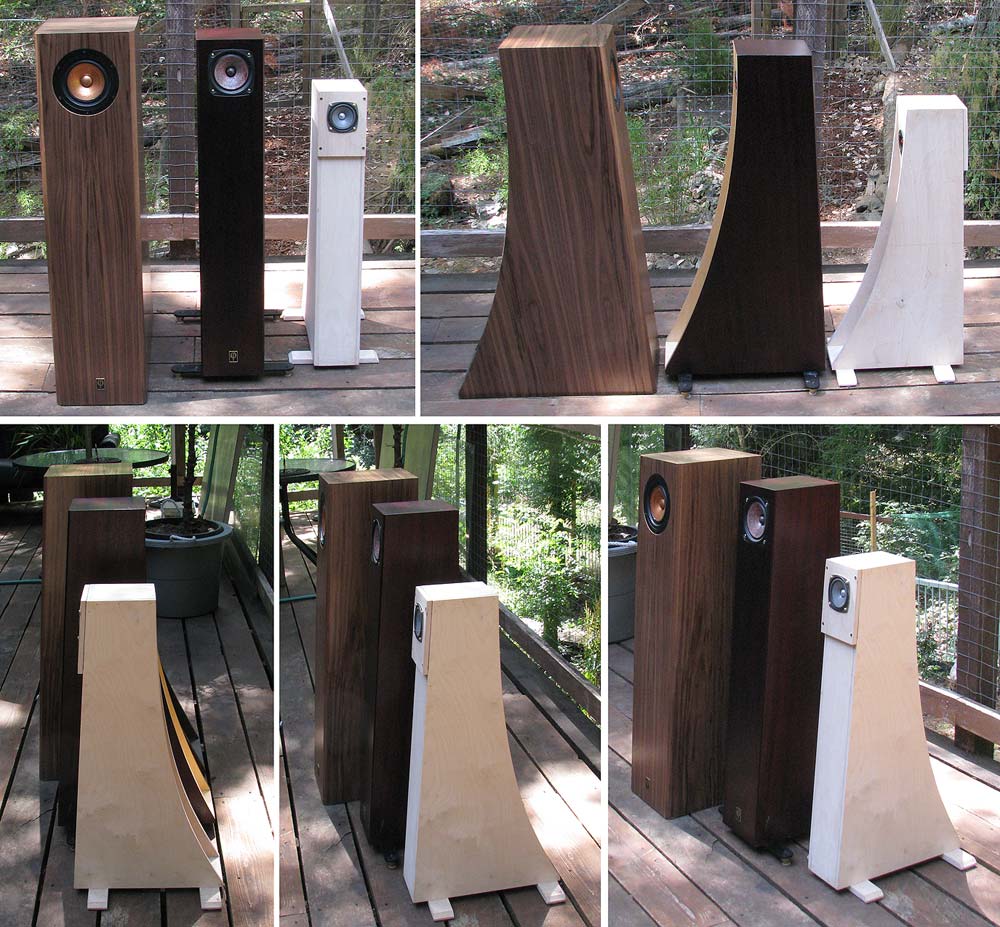
dave
One can put woofers on side panels...
The active reaction force cancellation of the push-push arrangement of the woofers brings huge benefits to reduction of energy loaded into the box allowing one a much easier route to a “noiseless” enclosure.
We have used this technique often. Here is a very pretty example (eye candy) — these are 4 boxes:
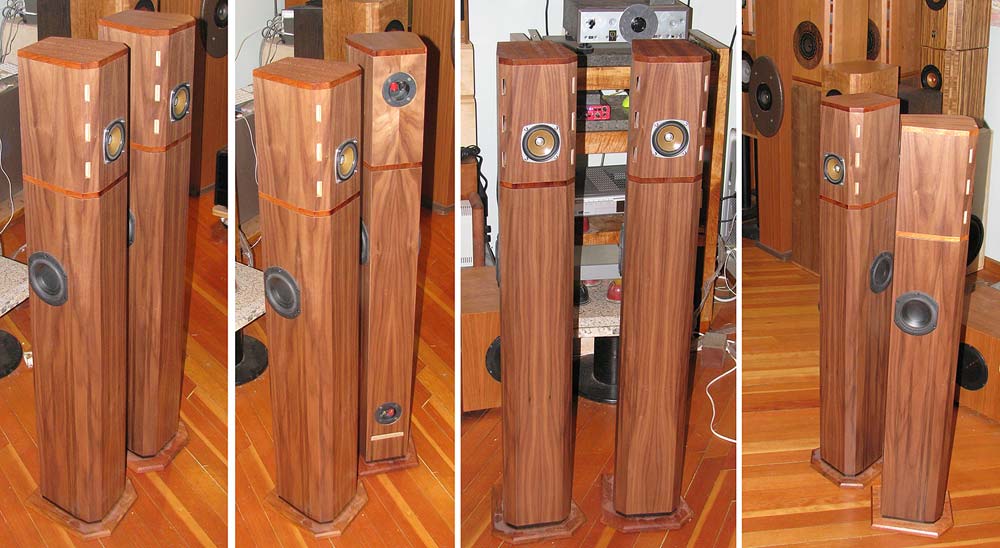
dave
Why? As an example, Dr. Geddes still runs the mains full-range, just with additional LFE sources for smoothing. To my knowledge, he has never recommended crossing over early.
Yes, that's because his room mode strategy it to activate as many modes as possible.
His speaker uses a 15 inch woofer to intentionally beam at the frequencies he wants. However, it is in a sealed cabinet. IOW, he isn't using his 15" to reach down into lower frequencies. I assumed he included the large woofer to reach lower frequencies but he corrected my misunderstanding.
Because low frequencies are inherent in his design for other reasons (directivity control) he allows them to activate room modes. It's a freebie. But, the two main channels are correlated in space and time so they behave like one low frequency source.
Alternatively, Floyd Toole and Todd Welti intentionally crossed low frequencies out of Toole's Revel Salon 2s. They used Welti's strategy.
Absolutely.Good to know I'm not alone in thinking that!
As diffraction is mitigated, the size of the cabinet becomes less important in the above context. Imaging can only get better.
Why wouldn't you do that?Yes, that's because his room mode strategy it to activate as many modes as possible.
Why wouldn't you do that?
I think it's because JBL Synthesis SFM uses opposing sources to noise cancel modes.
They can't do that without 'activating' (contributing to) those modes. When you say cancel, what happens to those frequencies. They are, after all associated with that mode because they are in the room.
Dr Geddes didn't express a desire to turn the modes into resonances, but you can't just ignore them.
Dr Geddes didn't express a desire to turn the modes into resonances, but you can't just ignore them.
Personally, with little more than hubris and god-given self-confidence to speak to what I do not actually know, I believe that very wide and very narrow baffles achieve much the same when it comes to diffraction. We remove the edge energy from playing a significant part. Very narrow baffles by having the diffraction occur at or nearly at the same time as the original impulse. Very wide baffles by pushing much more of the signal into the room before diffraction, leaving a mere ghost of a diffraction signature at the edge of the baffle.I know narrow baffle designs are supposed to image better or is that another myth?
I say I do not know this but I will say, the best imaging speakers, one's which not only image well but seem to capture the original hall's recording environment the best tend to be wide baffles, not narrow.
Troels goes into some description here:
Poor Man'
Best,
Erik
They can't do that without 'activating' (contributing to) those modes. When you say cancel, what happens to those frequencies. They are, after all associated with that mode because they are in the room.
Dr Geddes didn't express a desire to turn the modes into resonances, but you can't just ignore them.
I have no idea, you can ask Sean Olive about it on twitter.
Attachments
On his website for the NS15 it says this:Yes, that's because his room mode strategy it to activate as many modes as possible.
His speaker uses a 15 inch woofer to intentionally beam at the frequencies he wants. However, it is in a sealed cabinet. IOW, he isn't using his 15" to reach down into lower frequencies. I assumed he included the large woofer to reach lower frequencies but he corrected my misunderstanding.
Because low frequencies are inherent in his design for other reasons (directivity control) he allows them to activate room modes. It's a freebie. But, the two main channels are correlated in space and time so they behave like one low frequency source.
Alternatively, Floyd Toole and Todd Welti intentionally crossed low frequencies out of Toole's Revel Salon 2s. They used Welti's strategy.
Still don't know why you wouldn't want the free bass. I haven't seen any evidence that indicates that you get worse bass response at your listening position unless you ONLY excite the room modes with subs in the corners (??) I have seen the Harman white papers that show different responses with subs at two corners, 4 corners, midpoint of each wall, etc.however, ported designs are possible for extended low end should the use of multiple subs (highly recommended) not be desirable.
Can you elaborate more on this part:
and this part:Because low frequencies are inherent in his design for other reasons
For the latter point, I don't see why any stereo pair of speakers wouldn't behave exactly the same, given an equal spacing and crossover frequency.But, the two main channels are correlated in space and time so they behave like one low frequency source.
It was more of a rhetorical question. They both seem to be doing the same thing in slightly different ways.I have no idea, you can ask Sean Olive about it on twitter.
I think I recall from another thread, you suggested that you should swap from mains at the Schroeder frequency and move to multi-spacial sources. I'm starting to think your above comment is based on that premise. Your wording looks to be suggesting that there is a reason to do it that way (rather than simply highlighting that there is a change of circumstances in the band, which brings options).The upper frequency of bass is 250Hz which is 4.5 feet long. You're heading into the modal region by then. Which means you want to start moving your drivers out of your main channels anyway.
I think reading Dr Geddes other thread on multiple subs would be instructive, not just in his method but in the problem itself. There is a parallel in what all are looking to address.
I think narrow baffle speakers sounds better then wider ones, it is like the sounds releases better from the narrow baffles, i do not know if this is due to more panel noise with wider baffles or the increased dispersion with the narrow baffle, or both or something else
The details of multi-sub/modal region doesn't really matter. What matters is that you don't need to fit low frequencies onto the face of your narrow baffles.
Now, if a DIYer starts struggling with trying to fit low frequencies -- intending to get low frequency extension and no other reason -- into their narrow baffle design then I start to wonder why they're bothering.
Now, if a DIYer starts struggling with trying to fit low frequencies -- intending to get low frequency extension and no other reason -- into their narrow baffle design then I start to wonder why they're bothering.
I don't know if it comes from T. Gravsen with his Poor-man's Strad. or seen elswhere, but the idea was : big width enclosure images better but narrow ones shows more dynamic contrast and exhibit more snap/speed behavior at iso drivers...😕 ... it was not precising what the dynamic behavior was : micro or macro dynamic, etc...
Now when one is getting old enough to purchase a serious big Loudspeaker, you don't want this coffin watchs you all the days like a mirror... seing it at 90%, i.e. narrow baffle is politically... nicer 😀!
Now when one is getting old enough to purchase a serious big Loudspeaker, you don't want this coffin watchs you all the days like a mirror... seing it at 90%, i.e. narrow baffle is politically... nicer 😀!
I think asking whether narrow/wide baffle is better/worse for imaging is heading down the wrong path. It creates a false dichotomy.
In addition, both Geddes and Toole said the value of imaging is contingent on program material. In other words, imaging is not a universal good. Further, creating a design to image well conflicts with other pleasing attributes such as spaciousness.
Here's the way Geddes put it in this post.
Before asking about whether narrow/wide baffles are better at imaging we should ask whether you listen to program material that benefits from imaging. If you listen to a wide selection of music you probably don't want imaging. If you primarily listen to small group studio recordings *of high reproduction quality* then you might want a speaker designed to image well.
I've also noted that a lot of discussion regarding imaging is disconnected from program material. It's as though the underlying assumption is that a speaker can't be truly good unless it images well. However, that's totally wrong. My gut tells me a lot of DIYers chase imaging without understanding they might be like the dog who catches the car.
Imaging is one design attribute among many. Designing a speaker to image well comes at the expense of other pleasing attributes. Imaging has limited benefit contingent on program material.
In addition, both Geddes and Toole said the value of imaging is contingent on program material. In other words, imaging is not a universal good. Further, creating a design to image well conflicts with other pleasing attributes such as spaciousness.
Here's the way Geddes put it in this post.
"That different musical types might be preferred with different designs is something that I have said for a long time. The best way to have "both worlds" is not at all clear to me. I have only ever sought one side of this coin and haven't given much thought to how to do both."
Before asking about whether narrow/wide baffles are better at imaging we should ask whether you listen to program material that benefits from imaging. If you listen to a wide selection of music you probably don't want imaging. If you primarily listen to small group studio recordings *of high reproduction quality* then you might want a speaker designed to image well.
I've also noted that a lot of discussion regarding imaging is disconnected from program material. It's as though the underlying assumption is that a speaker can't be truly good unless it images well. However, that's totally wrong. My gut tells me a lot of DIYers chase imaging without understanding they might be like the dog who catches the car.
Imaging is one design attribute among many. Designing a speaker to image well comes at the expense of other pleasing attributes. Imaging has limited benefit contingent on program material.
- Home
- Loudspeakers
- Multi-Way
- Are modern narrow baffle designs inherently flawed?
